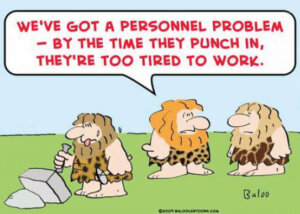The Rolling Stones famously sang about how “Time Is On My Side,” and that’s pretty much the case, unless you fail to record and maintain accurate time records for your employees under California law. As an employer, it’s on you to make sure your workers aren’t abusing the system whenever they clock in or don’t clock in properly. And if you, the employer, has to enforce your policy to make sure accuracy is being followed, then so be it. Here are four tips you might find helpful to make sure everyone is on the same page.
1. Make certain the time records are accurate.
If there is an electronic time-keeping system in place (i.e. the time clock), life is a little easier. However, if an employee is recording their time manually (i.e., on a spreadsheet) these records must be audited to make sure the employee is being accurate in their time tracking. And make sure you have all the information you need. For example, while employers are not required to record 10-minute rest breaks, employers are required to record employee’s meal periods under the IWC Wage Orders requirement.
2. Storing time records for the required amount of time.
It’s important to note that the statute of limitations can reach back four years in wage and hour class actions under California law, and time records could be the deciding factor in most of these cases. California law requires employers to track start and stop times for hourly, non-exempt employees, and record meal breaks. And the onus is on you, the employer to make sure these records are safely tucked away somewhere should you be called on to produce them in the next four years should a wage and hour claim rear its ugly head.
3. Maintaining time records in a usable format.
What good is maintaining records if you can’t decipher them when the time comes that you actually need them? Put some effort into how you can effectively record and understand that data in the future, if needed. Electronic time records are easiest to analyze given that the data is digital (but don’t forget to back it up), and paper copies are just fine, as long as you make duplicates. Failure to do either (or both) is the groundwork for a future litigation nightmare.
4. Keeping track of employees’ signed agreements, acknowledgments, and time adjustments.
Don’t think it’s only time records that need a safe and easily accessible place to be stored. You also have to come up with a system for storing, indexing, and retrieving records such as any time adjustments, employee signed waivers, and signed acknowledgments. Documentation is the name of the game, and being able to put your hands on said documents when the time is right is the key to staying in the game.



